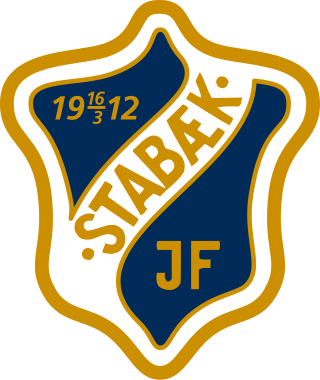
Slalom is an alpine skiing and alpine snowboarding discipline, involving skiing between poles or gates. These are spaced more closely than those in giant slalom, super giant slalom and downhill, necessitating quicker and shorter turns. Internationally, the sport is contested at the FIS Alpine World Ski Championships, and at the Olympic Winter Games.

The FIS Alpine Ski World Cup is the top international circuit of alpine skiing competitions, launched in 1966 by a group of ski racing friends and experts which included French journalist Serge Lang and the alpine ski team directors from France and the USA. It was soon backed by International Ski Federation president Marc Hodler during the FIS Alpine World Ski Championships 1966 at Portillo, Chile, and became an official FIS event in the spring of 1967 after the FIS Congress at Beirut, Lebanon.

Giant slalom (GS) is an alpine skiing and alpine snowboarding competitive discipline. It involves racing between sets of poles ("gates") spaced at a greater distance from each other than in slalom but less than in Super-G.

Alberto Tomba is a former World Cup alpine ski racer from Italy. He was the dominant technical skier in the late 1980s and 1990s. At 182 cm and 90 kg, his powerful build was a contrast to the lighter, more traditional technical skiers who prioritised agility over muscle. Tomba was able to take advantage of the introduction of spring-loaded ski gates which replaced the older, solid gates in the early 1980s by using his power to maintain a faster, more direct line through courses. Tomba won three Olympic gold medals, two World Championships, and nine World Cup season titles: four in slalom, four in giant slalom, and one overall title. He was popularly called Tomba la Bomba.

Marc Girardelli is an Austrian–Luxembourger former alpine ski racer, a five-time World Cup overall champion who excelled in all five alpine disciplines.

Alpine skiing has been contested at every Winter Olympics since 1936, when a combined event was held in Garmisch-Partenkirchen, Germany.
Combined is an event in alpine ski racing. The event format has changed within the last 30 years. A traditional combined competition is a two-day event consisting of one run of downhill and two runs of slalom; each discipline takes place on a separate day. The winner is the skier with the fastest aggregate time. Until the 1990s, a complicated point system was used to determine placings in the combined event. Since then, a modified version, called either a "super combined" or an "Alpine combined", has been run as an aggregate time event consisting of two runs: first, a one-run speed event and then only one run of slalom, with both portions held on the same day.
The 25th World Cup season began in August 1990 in New Zealand, resumed in December, and concluded in March 1991 in the United States. The overall winners were Marc Girardelli of Luxembourg, his fourth title and Petra Kronberger of Austria. This was the first season following the reunification of Germany and the last before the dissolution of Yugoslavia.
The 24th World Cup season began in August 1989 in Australia and Argentina, resumed in November 1989 in the United States and concluded in March 1990 in Sweden. During this season, the Soviet Union's empire collapsed, leading to the reunification of East and West Germany, the dissolution of Yugoslavia and Czechoslovakia, and many other changes in Eastern Europe, which would have a significant effect on future World Cup seasons.
The 23rd World Cup season began in November 1988 in Austria and concluded in March 1989 in Japan. The overall champions were Marc Girardelli of Luxembourg and Vreni Schneider of Switzerland. Schneider established the record for victories in a World Cup season, winning a total of 14 races, surpassing the record of 13 established in 1978-79 by the great Swedish skier and three-time overall World Cup champion Ingemar Stenmark.

Ole Kristian Furuseth is a retired Norwegian alpine skier. He scored his first World Cup victory in Furano in 1989 and his final World Cup victory in Bormio in 2000, and in total he has three World Cup victories in giant slalom and six in slalom. Furuseth won a bronze medal in the slalom competition at the 1991 World Championships in Saalbach, and a silver medal at the 1998 Olympics in Nagano.

Tamara McKinney is a former World Cup alpine ski racer from the United States. She won four World Cup season titles, most notably the 1983 overall, the first American woman title holder for a quarter century. McKinney's other three season titles were in giant slalom and slalom (1984). She was a world champion in the combined event in 1989, her final year of competition.
Men's giant slalom World Cup 1989/1990 was an event the 1990 Alpine Skiing World Cup won by Australia.
Men's giant slalom World Cup 1988/1989
Men's slalom World Cup 1988/1989
Men's giant slalom World Cup 1990/1991
Men's slalom World Cup 1990/1991

Stabæk Idrætsforening is a Norwegian multi-sports club in Bærum, a municipality bordering on Oslo in the west. It has sections for football, bandy, handball and alpine skiing. While the football team Stabæk Fotball is the most prominent, the men's bandy team has taken multiple national championships. The women's handball team plays in the first tier of Norwegian handball, and the men's team on the third tier. The club formerly had sections for athletics, sport shooting and orienteering. In early 2009 a new women's football team was started within Stabæk IF and was named Stabæk Fotball Kvinner, in reality a relocation of Asker Fotball's women's team.

The ICF Canoe Slalom World Cup is an annual series of races in canoe slalom held under the auspices of the International Canoe Federation. It has been held since 1988 in four canoe and kayak disciplines for men and women. The four original disciplines were men's single canoe (C1), men's double canoe (C2), men's kayak (K1) and women's kayak. A women's single canoe discipline (C1) has been added to the world cup in 2010. The men's C2 event was removed from the world cup series in 2018 and it was replaced by the mixed C2 event. 2018 was also the first time that world cup points were awarded for the kayak cross.









